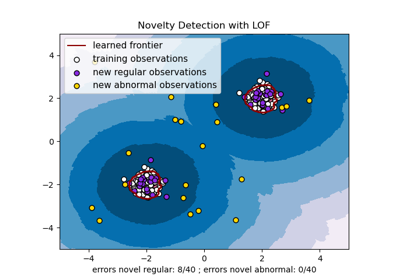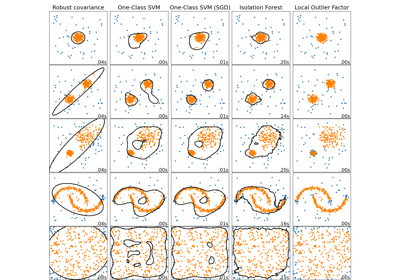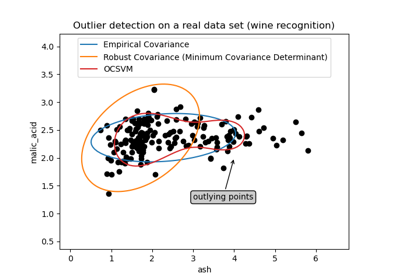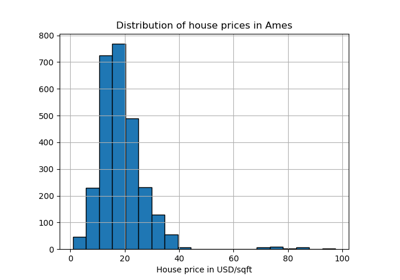注意
跳转到末尾 下载完整的示例代码。或者通过 JupyterLite 或 Binder 在浏览器中运行此示例
使用局部异常因子 (LOF) 进行异常检测#
局部异常因子 (LOF) 算法是一种无监督异常检测方法,它计算给定数据点与其邻居的局部密度偏差。它将密度明显低于其邻居的样本视为异常值。此示例展示了如何使用 LOF 进行异常检测,这是 scikit-learn 中此估计器的默认用例。请注意,当 LOF 用于异常检测时,它没有 predict、decision_function 和 score_samples 方法。有关异常检测和新颖性检测之间的区别以及如何使用 LOF 进行新颖性检测的详细信息,请参阅用户指南。
考虑的邻居数量(参数 n_neighbors)通常设置为 1) 大于簇必须包含的最小样本数,以便其他样本相对于此簇可以是局部异常值,以及 2) 小于可能作为局部异常值的附近样本的最大数量。实际上,此类信息通常不可用,并且通常 n_neighbors=20 效果良好。
# Authors: The scikit-learn developers
# SPDX-License-Identifier: BSD-3-Clause
生成带有异常值的数据#
import numpy as np
np.random.seed(42)
X_inliers = 0.3 * np.random.randn(100, 2)
X_inliers = np.r_[X_inliers + 2, X_inliers - 2]
X_outliers = np.random.uniform(low=-4, high=4, size=(20, 2))
X = np.r_[X_inliers, X_outliers]
n_outliers = len(X_outliers)
ground_truth = np.ones(len(X), dtype=int)
ground_truth[-n_outliers:] = -1
拟合模型以进行异常检测(默认)#
使用 fit_predict 计算训练样本的预测标签(当 LOF 用于异常检测时,估计器没有 predict、decision_function 和 score_samples 方法)。
from sklearn.neighbors import LocalOutlierFactor
clf = LocalOutlierFactor(n_neighbors=20, contamination=0.1)
y_pred = clf.fit_predict(X)
n_errors = (y_pred != ground_truth).sum()
X_scores = clf.negative_outlier_factor_
绘制结果#
import matplotlib.pyplot as plt
from matplotlib.legend_handler import HandlerPathCollection
def update_legend_marker_size(handle, orig):
"Customize size of the legend marker"
handle.update_from(orig)
handle.set_sizes([20])
plt.scatter(X[:, 0], X[:, 1], color="k", s=3.0, label="Data points")
# plot circles with radius proportional to the outlier scores
radius = (X_scores.max() - X_scores) / (X_scores.max() - X_scores.min())
scatter = plt.scatter(
X[:, 0],
X[:, 1],
s=1000 * radius,
edgecolors="r",
facecolors="none",
label="Outlier scores",
)
plt.axis("tight")
plt.xlim((-5, 5))
plt.ylim((-5, 5))
plt.xlabel("prediction errors: %d" % (n_errors))
plt.legend(
handler_map={scatter: HandlerPathCollection(update_func=update_legend_marker_size)}
)
plt.title("Local Outlier Factor (LOF)")
plt.show()
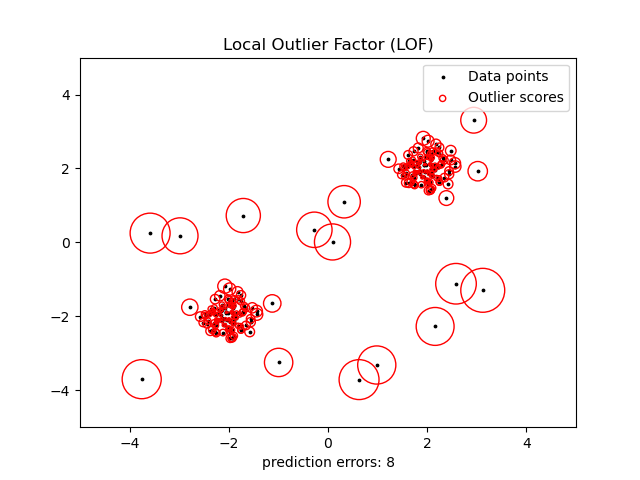
脚本总运行时间: (0 分 0.077 秒)
相关示例

